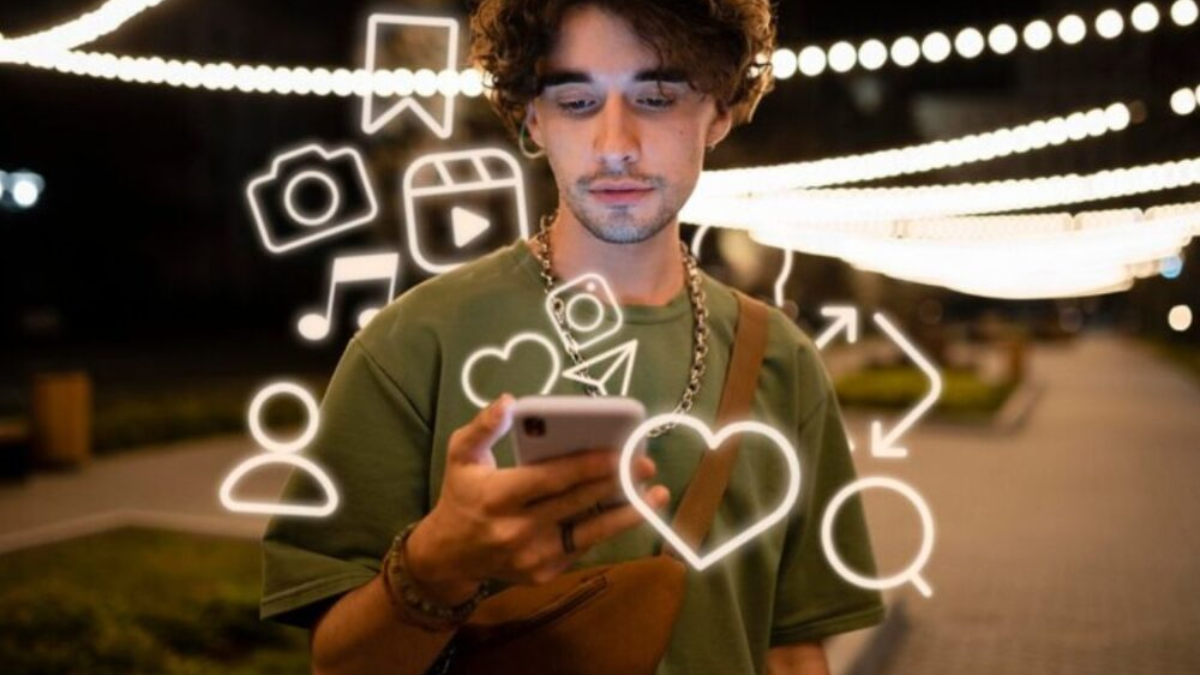In an era dominated by digital influence, the term “influencer” has evolved far beyond social media personas. It now encompasses entrepreneurs, content creators, thought leaders, and even AI-driven avatars shaping the way consumers interact with brands and ideas. Among the most intriguing developments in this realm is a rising phenomenon called Influencersginewuld.
While the name might seem unfamiliar or even fabricated at first glance, Influencersginewuld represents a fusion of cutting-edge technology, behavioral science, and digital marketing strategies. It’s an umbrella term that characterizes the next wave of influencer ecosystems—an ecosystem that goes beyond traditional endorsements and taps into predictive analytics, immersive content, and hyper-personalized interactions.
This blog post will delve deep into the concept of Influencersginewuld, explore how it reshapes the influencer economy, examine its components and technological underpinnings, and provide answers to commonly asked questions about its role and future in digital engagement. We’ll also highlight the implications for businesses, content creators, and consumers alike, and forecast where this phenomenon is headed in the coming years.
Understanding Influencersginewuld
Influencersginewuld is not a platform, tool, or company; rather, it is a conceptual framework that reflects a more evolved and intelligent form of influencer engagement. It borrows from the principles of machine learning, neuromarketing, metaverse technologies, and crowd psychology to create influencer systems that are self-optimizing, dynamic, and incredibly precise in targeting.
Unlike traditional influencer marketing—where a brand collaborates with a popular figure to promote products—Influencersginewuld builds holistic digital environments where influencers are more than messengers. They are nodes in a living network of influence that adapts based on audience behavior, algorithmic signals, and emotional responses. These systems are continuously learning and evolving, adjusting their strategies in real time for maximum impact.
The Evolution of Influencer Culture
To understand Influencersginewuld, we must first trace the path of influencer culture. Initially, influencers were largely confined to niche blogs and YouTube channels. As platforms like Instagram, TikTok, and Twitch gained prominence, influencer culture became synonymous with lifestyle branding and visual storytelling. Influencers transitioned from being hobbyists to full-time content creators, building entire careers on platforms that enabled direct engagement with audiences.
But digital fatigue, ad-blocking behavior, and rising skepticism toward sponsored content began to erode consumer trust. This prompted a need for more authentic, emotionally resonant content that aligns with real-world values and experiences. Influencersginewuld arose from this demand, offering a multi-layered strategy that fuses real-time data, immersive technologies, and authentic voices.
Key Components of Influencersginewuld
Behavioral Targeting and Emotional AI
Central to the concept of Influencersginewuld is emotional AI—algorithms that understand and respond to human emotions. These tools use facial recognition, sentiment analysis, and biometric feedback to adjust messaging based on a user’s psychological state. Combined with behavioral targeting, this allows influencer content to adapt in real time to how users feel or behave. For example, if a user is feeling stressed, content may shift to be more soothing or supportive, offering mental wellness advice or comfort-oriented products.
Immersive and Interactive Media
Static images and pre-recorded videos are no longer enough. Influencersginewuld leverages augmented reality (AR), virtual reality (VR), and mixed reality (MR) to create interactive narratives that captivate audiences and build deeper emotional connections. Imagine participating in a fashion show hosted by a virtual influencer in the metaverse, where you can interact with the clothes in real time or even try them on using AR filters.
Algorithmic Influence Mapping
Rather than relying solely on follower counts or likes, this model uses complex algorithms to map influence across networks, pinpointing micro-moments of engagement that have the highest conversion potential. Influence mapping identifies not just who is influential, but when and where their impact is most felt, allowing for highly strategic content deployment.
Influence Clusters and Community Nodes
The influencer is no longer a lone voice. Instead, they are part of influence clusters—digital communities with distributed leadership, where micro-influencers and fans contribute to a larger shared narrative. These community nodes work together to co-create content, reinforce brand messages, and engage followers on multiple levels. This fosters a sense of belonging and authenticity that traditional celebrity endorsements lack.
The Technology Behind Influencersginewuld
Machine Learning and Predictive Analytics
Machine learning algorithms analyze vast datasets to predict audience behavior, enabling influencers to time their content perfectly and select messaging that resonates most with their target audience. These predictions are continuously refined, creating a feedback loop that improves campaign performance over time.
Blockchain and Smart Contracts
Blockchain technology ensures transparency in influencer-brand relationships. Smart contracts automate payments, performance metrics, and campaign timelines, reducing fraud and increasing trust. Every interaction can be verified on a decentralized ledger, ensuring authenticity and compliance.
Metaverse and Digital Twins
The metaverse is a crucial playground for Influencersginewuld. Here, influencers create digital twins—virtual avatars that operate in immersive environments, engage with fans, and promote products in entirely new ways. Digital twins can host virtual events, interact with global audiences 24/7, and even exist across multiple virtual worlds simultaneously.
The Social and Ethical Impact
As with any emerging technology, Influencersginewuld raises critical ethical questions. Who owns the data collected through emotional AI? How do we prevent deepfake influencers from spreading misinformation? What are the long-term psychological effects of hyper-personalized content?

While these issues are complex, many experts argue that the very design of Influencersginewuld allows for greater transparency and accountability—so long as developers and platforms maintain ethical standards and user-centric policies. Open dialogue, industry regulation, and ethical design principles will be vital in ensuring that these technologies serve the greater good.
Case Studies and Real-World Applications
Virtual Influencers in Fashion
Brands like Balenciaga and Gucci have already embraced virtual influencers to showcase their collections in metaverse settings. These digital personalities use Influencersginewuld principles to engage fans through gamified experiences, such as fashion scavenger hunts, AR dressing rooms, and interactive brand storytelling.
Political Campaigning
Some political campaigns have begun using algorithm-driven influence maps to target voters more effectively. These systems analyze sentiment data and deploy influencer content tailored to local values and concerns. Influencers working under the Influencersginewuld framework are seen not just as promoters but as cultural translators who can align messages with specific communities.
Health and Wellness Platforms
Health apps and platforms are increasingly working with fitness influencers who use biometric feedback and AI-powered content to offer personalized routines, mental wellness tips, and diet suggestions. This creates a more holistic and engaging wellness journey for users, increasing long-term adherence and satisfaction.
Education and Skill Building
Influencersginewuld principles are being applied in the field of education as well. Educational influencers are using immersive platforms to create gamified learning environments, while AI algorithms track student engagement and personalize learning content accordingly.
The Business Opportunity
For marketers and entrepreneurs, Influencersginewuld presents a goldmine of possibilities. Campaigns become more agile, results more measurable, and audience engagement more genuine. New roles are also emerging—like influence architects, content tacticians, and algorithmic storytellers.
Startups are developing SaaS platforms that integrate emotional tracking, predictive engagement tools, and decentralized payment gateways—all rooted in the principles of Influencersginewuld. For creators, this framework opens up new revenue streams, deeper engagement, and broader cross-platform influence.
For brands, it provides a competitive edge in the crowded digital marketplace, allowing them to connect with audiences in ways that feel personal, immersive, and emotionally resonant. Influencersginewuld is not just another trend; it’s a shift in how influence itself is created, managed, and measured.
Future Trends to Watch
Hyper-Personalization at Scale
Thanks to advances in AI and big data, future influencer campaigns will deliver personalized messages to millions, each tailored to an individual’s mood, habits, and preferences. This could extend beyond content to products themselves—offering custom skincare formulas, personalized fashion designs, or curated wellness plans.
Zero-Click Engagement
Imagine scrolling past an influencer post and your smart speaker immediately offers to purchase the item being promoted. Zero-click engagement is the next frontier, enabled by connected devices and predictive triggers. This seamless interaction will redefine the concept of a sales funnel.
Autonomous Influence Agents
AI bots may soon become influential in their own right. These autonomous agents could generate content, respond to comments, and evolve their digital personas based on audience interaction. Some may even develop their own brand partnerships and negotiate contracts through smart contracts.
Emotionally Aware Content Ecosystems
As emotional AI becomes more sophisticated, entire content ecosystems may be designed to respond to human emotions in real-time. Influencersginewuld will be central to this shift, enabling dynamic content adjustments based on live sentiment feedback.
Quantum Computing in Influence Prediction

Although still in its infancy, quantum computing could one day play a role in influence analytics. Its ability to process vast and complex datasets could allow for previously unimaginable levels of precision in predicting engagement and influence patterns.
Frequently Asked Questions (FAQs)
What exactly is Influencersginewuld?
It’s a next-gen conceptual framework that combines AI, emotional analytics, immersive media, and behavioral science to create a more evolved influencer ecosystem.
Is Influencersginewuld a platform or app?
No. It’s not a product but rather an overarching strategy or methodology that can be implemented through various tools and platforms.
Who can benefit from Influencersginewuld?
Marketers, content creators, brands, political organizations, educators, and even non-profits can leverage Influencersginewuld for deeper audience engagement and smarter campaign results.
Is it ethical to use emotional AI in influencer marketing?
The ethics of emotional AI depend on transparency and consent. When used responsibly, it can enhance user experiences. However, misuse can lead to manipulation or data privacy issues.
How can I start using Influencersginewuld principles?
Start by learning about emotional AI, metaverse tools, and data-driven storytelling. Collaborate with platforms or agencies experimenting with immersive content and behavioral analytics. Embrace a mindset of experimentation and continuous learning.
Will Influencersginewuld replace traditional influencers?
Not necessarily. Traditional influencers can evolve by adopting Influencersginewuld principles, becoming more adaptive and technologically integrated in their approach.
Can small businesses use Influencersginewuld?
Absolutely. In fact, smaller businesses can benefit even more from its precision targeting and personalized engagement, leveling the playing field with larger competitors.
Conclusion
Influencersginewuld represents a radical rethinking of how we define, deploy, and experience influence. As the digital world grows more complex, this framework offers a roadmap to authenticity, precision, and impact. Whether you’re a creator, marketer, or tech enthusiast, understanding and embracing Influencersginewuld could be your gateway to staying relevant in an ever-evolving landscape of digital communication.
It’s not just the future of influencer marketing—it’s the future of influence itself. As we move forward, the integration of technology, emotion, and community will continue to redefine our digital interactions. Influencersginewuld is both a vision and a reality—a call to build smarter, more human, and more innovative networks of influence.
